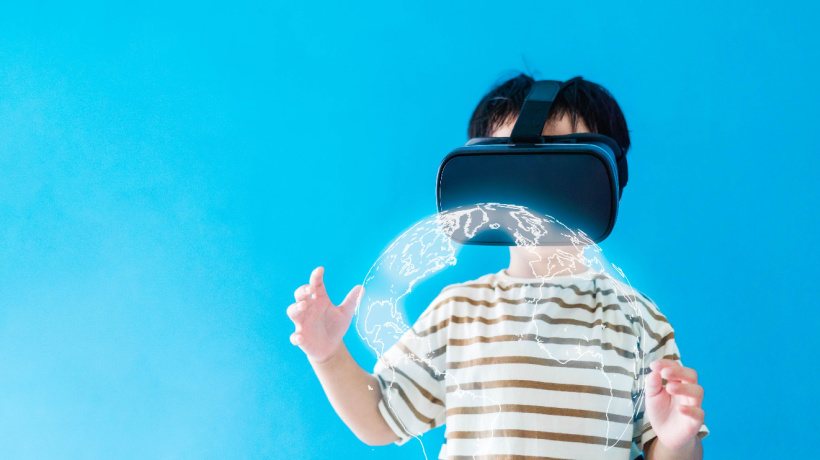Understanding The Use Of VR And AR In Learning And Training
Business sectors that once relied heavily or solely on physical reading material and on-site training are now embracing technology and utilizing simulations to foster learning. For example, pilots can practice flying a plane through VR technology and prepare themselves for the experience in a safe environment. On the other hand, AR simulations can assist transportation professionals by providing digital directions and navigation prompts, making it easier for them to reach their destination. These technologies can also be implemented in the education system, which teachers, students, and parents support. 97% of students would like to study with the assistance of AR and VR simulations, while 93% of teachers believe learners' engagement will increase.
The Different Learning Systems In Education
Closed System
Students wear VR headsets and focus on the learning subject fully without any exterior interference. This way, they don't lose their attention and can dive into everything they've already read in books. When immersive gamified elements are added, learning becomes a fun experience they look forward to. However, this approach can alienate students from their surroundings and show them that interpersonal communication is not necessary. They can't discuss the questions they have about the material with their teachers and peers on the spot, and therefore, their knowledge is one-dimensional.
Open System
AR aims to support the teacher's process and interactively explain the subject. It fits the special requirements of each learner and provides extra information to students who have trouble understanding a topic without replacing the physical presence of an educator. Kids can also learn while interacting and collaborating with their peers. AR can collect and analyze data regarding each student's progress and create quizzes to test their knowledge. Then, it can send this information to teachers, counselors, and psychologists.
The Benefits Of Implementing VR And AR Simulations In Learning
Affordable And Accessible
VR simulations need specific headsets to operate, and while this may look like a hefty expense, large organizations may be able to incorporate them easily into their courses. Other than that, they don't require any extra technological tools. On the other hand, AR simulations can be accessed through smartphones and tablets. Learners can use their own gadgets or the ones offered by their company or school to enjoy the learning content at their own pace and from wherever they are. Not to mention, inclusivity is fostered since people with disabilities may also enter the learning environment with ease. However, developers and designers must ensure that the content is provided in different forms that accommodate people of all needs.
Promote Collaboration
Not everyone can grasp knowledge at the same pace. AR and VR simulations allow teachers and trainers to adapt the learning material based on individual needs. Each learner can have their own pace preset and get tested on their acquired knowledge. This process relieves stress and helps them fill gaps. Also, educators can ask schools to build simulated classrooms and online communities where students can meet, exchange ideas, share knowledge, and collaborate efficiently to reinforce their social and emotional growth.
Increase Motivation And Engagement
Many learning developers and teachers face the issue of maintaining their learners' full attention from start to finish. By implementing VR and AR simulations, they can engage them and help them participate more in projects. Trainees and pupils receive assistance and additional information when they have trouble understanding a complex concept so they can improve. Also, their imagination grows, meaning they aren't afraid to innovate and think outside the box.
Develop Soft And Technical Skills
Building VR simulations can prepare employees for real-life occurrences before they actually start working. For example, retail stores may utilize digital scenarios to show salespeople how they should handle customer complaints and maintain customer satisfaction. As a result, they are prepared for disgruntled customers who may act angry. Moreover, simulations can help develop technical skills in industries like healthcare and construction. In the latter, safety training through VR and AR can prove lifesaving, and professionals who receive immersive training may be more qualified than those with traditional training.
Help Prepare People For Emergencies
VR and AR simulations prepare professionals for emergencies in two ways: hazard recognition and prevention. Through AR, workers in fields like construction and healthcare can recognize potential hazards and learn how to avoid them. For instance, builders are shown the dangers a construction site poses and ways they can safeguard themselves and those around them. As another example, Walmart has implemented AR technology in its safety training to educate its employees on how they should behave in life-threatening situations.
Business Sectors That Profit From VR And AR Simulations
Education
Technology has entered the world of education for a long time now. Starting from overhead projectors and smart screens, the sector is headed in a new direction. Through VR and AR simulations, students can visit monuments, interact with the outside world, and get first-hand experience, all while in class or at home. They can even view human anatomy and learn about molecular structures and architecture through 3D elements. This way, strange and complex matters become easily comprehensible, and learners participate in class with greater engagement and interest. Additionally, through VR headsets, learners can visit a foreign country and learn its language by talking to virtual locals.
Healthcare
Healthcare professionals used to get surgery training solely by operating on real people. However, VR and AR simulations can now help them receive faster training without the risk of harming patients. Similarly, physical therapists can not only practice rehabilitation exercises themselves but also assign their patients VR-based exercises, thus being able to monitor their progress remotely. Last but not least, VR headsets can help patients get their minds off the pain after surgery.
Manufacturing
Manufacturers typically deal with heavy and possibly dangerous machinery where mistakes can cost lives. VR and AR are able to provide safety training by familiarizing professionals with their working environment, potential hazards, and how to shield themselves against them. AR additionally offers real-time guidance to assembly-line workers, providing them with information regarding even the most complex functions. These virtual instructions can significantly speed up processes and prevent mistakes. As a result, companies steer clear of unnecessary costs that are connected to human error due to limited training.
Real Estate
Property viewings usually require the physical presence of real estate agents and interested buyers. However, with AR and VR simulations, this process can be carried out virtually. For example, buyers can take a virtual tour of a property through VR headsets. They can also envision how the space will look once decorated with AR technology. Using real-life pictures of the property, agents can add virtual decorative elements and furniture inside the rooms. Alternatively, for in-person viewings, agents can add QR codes throughout the properties so buyers can access extra information, including floor plans, 3D models, and other information.
Conclusion
AR and VR simulations come with their challenges, too. Creating a learning environment where headsets are preferred over educators can make the latter feel obsolete and push students toward isolation. At the same time, many experience headaches and motion sickness when using VR headsets, or connectivity issues may arise and cause frustrating delays. The bottom line is that, like any technological advancement, VR and AR should be carefully curated to produce the desired learning outcomes.









